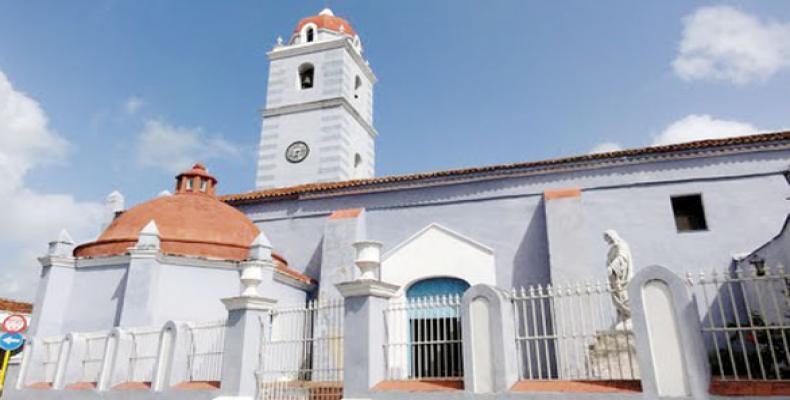Sancti Spiritus, June 4 (RHC) -- June 4th, 1514 is the date in which Cubans mark the establishment of the city of the Holy Spirit, later known as Sancti Spiritus.
Magón was the indigenous name of the area, meaning full of rivers, where Spaniards founded Sancti Spiruts in the central part of Cuba, one of the first 7 cities founded by the Spaniards in Cuba. Four weeks after its founding, its first settlers were surprised when famous Friar Bartolomé de Las Casas, the priest who defended indigenous communities, delivered a sermon regretting and criticizing colonizers for their abuse against natives and calling for humanizing their treatment. In 1521, its residents showed their rebelliousness when they rejected the imposition of a ruler and freely elected a neighbor.
Legends and traditions abound around the history of Sancti Spiritus, including the one dealing with the construction of the bridge over the Yayabo River, which is said to have been built with a mixture of cow milk, which gave it such strength that it still stands and holds the traffic of vehicles toward the city’s south. It is also said that Sancti Spiritus is the cradle of the “guayabera”, Cuba’s national garment, and also the site where the traditional “trova espirituana” was born as a particular way of singing in the area, or the way in which the troubadour song movement in Sancti Spiritus is called.
Its historic section, the Principal Parish Church and the bridge over the Yayabo River are majestic national monuments and stand as faithful examples of colonial architecture. The city’s oldest constructions include the home where Major General Sefarín Sánchez was born. Sánchez participated in the three wars of independence against Spain and played an essential role in uniting the old “mambises” or independence fighters with Cuban National Hero José Martí to organize the necessary war against colonizers.
You don’t need to travel on a time machine to take a look at the cultures and historic events occurred in Cuba long time ago. Part of that past is preserved in Sancti Spiritus, a city founded by Diego Velázquez in 1514. Everyone who visits the city is immediately trapped by its architecture with narrow and irregular streets that converge or end unexpectedly. The Principal Parish Church is the city’s oldest construction, built in 1680. Its bell tower and clock are located 36 meters high.
Close to those symbols stands the Colonial Arts Museum which, according to experts, is one of Cuba’s most beautiful museums. The cultural center is located in an 18th century construction which used to be the palace of the wealthy Valle family that keeps nearly two thousand valuables pieces.
Described as the only such example existing in Cuba, the bridge over the Yayabo River is a symbol of the provincial capital of the province of Sancti Spiritus. The bridge over the Yayabo River is held by five grand arches built with bricks and other materials from the times. After its conclusion more than 170 years ago, it has challenged the passage of time and numerous floodings and river swellings, an evidence of the strength and firmness of the work built by prisoners from the area.
Several volunteer raising campaigns were held for its construction and the largest donation for it was made by Bishop Espada y Landa in 1819, two years after the bridge’s first stone was laid, standing at one thousand golden pesos. It is said that the works cost some 30 thousand.
Throughout the 14 years in which it was constructed, many initiatives had to be taken to raise funds. At that time many constructive actions had to be changed due to its deterioration caused by the rain and the passage of horse-drawn carriages, including the addition of diamonds in its pillars to resist floodings and river swellings. Works are said to have finished in May of 1831. In the early 20th century the original cobblestones were paved to facilitate the passage of vehicles of the time.
The legend says that cow and goat milk and even bull blood were used in the mixture that unites the bridge’s bricks, along with Roman cement, a material found in the area, mixed with other local materials that have given the bridge its resistance, strength and beauty.
Even though a concrete and steel bridge was built later down the river, it is still the bridge that city dwellers and visitors take southward toward the city of Trinidad, another colonial jewel, relatively close to Sancti Spiritus, the city that is celebrating its 505th birthday on June 4.


